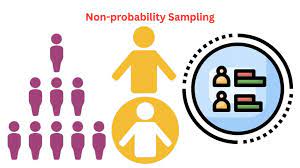Advantage and Disadvantage of Non-Probability SamplingMost commonly there are two types of sampling processes; probability sampling and non-probability sampling. In probability sampling, the likelihood of a population member being chosen can be calculated, but in non-probability sampling, it cannot be done. For instance, a researcher could be able to determine that one participant has a 35% chance of being chosen to take part in the study, compared to another's 10% chance. However, non-probability sampling ensures that every participant has an equal opportunity to be chosen even when participation is not assured. In this article, we will discuss about non-probability sampling, along with some advantages and disadvantages. 
Knowing the kinds of approaches we will employ, will help us be ready when conducting an inquiry and collecting data. Due to this, sampling can be divided into two categories: random or probabilistic sampling and non-probabilistic sampling. What is non-probability sampling?Definition: In a sampling approach known as non-probability sampling, samples are picked or choose by the researcher based on their own evaluation rather than randomly/ random choose. It is a looser strategy. This sampling method heavily depends on the researchers' expertise. Because it is conducted through observation, researchers commonly employ it for qualitative research. Non-probability sampling, in comparison to probability sampling, does not ensure that every person of the population has an equal chance of participating in the study of the researcher. There is a known probability that each person in the population will be chosen. Researchers use this technique in projects where random probability sampling is impractical due to time or cost restrictions. Non-probability sampling examplesHere are three straightforward examples of non-probability sampling to help you better comprehend the concept:
When to use Non-probability Sampling?
Advantages of Non-Probability Sampling
Disadvantages of Non-Probability Sampling
Different Methods of non-probability samplingCommonly used non-probability sampling methods are-
1. Convenience samplingCareless, unorganised, accidental, or opportunistic sampling are some names for convenience sampling. The sample is chosen based on how convenient it is to use. The researcher chooses certain units that are convenient for him. There is no need to plan when choosing the things. Convenience sampling makes ensuring that the units are accessible and that the source list is readily available. Despite not being scientific, numerous samples are useful for sampling. A convenience sampling is used in the following situations:
2. Quota sampling:Quota sampling combines stratified sampling and purposive sampling elements. In quota sampling, the field workers only include units in the sample that meet certain predetermined criteria. According on one or more parameters, each field worker is given a certain number of units to include in the shipment. To increase the representativeness of a sample, the field worker may be instructed to call every fourth house and interview one person until the quota is reached... Advantages of Quota sampling:
Disadvantages of Quota sampling:
3. Judgement SamplingOne of the non-probability sampling techniques is judgement sampling. By choosing a group from the population based on the facts at hand, judgement sampling is done. It involves the group being chosen intuitively based on standards that are thought to be self-evident. Under this procedure, units are included to the sample based on the determination that they meet the criteria for inclusion as population representations. Advantages of Judgement sampling: The following are the main benefits of the judgement sampling:
Disadvantages of judgement sampling:
What is the difference between Probability and Non-probability Sampling?A population is sampled, and research participants are chosen using both probability sampling and non-probability sampling procedures. However, the processing of the two different sampling procedures varies. As a starting point, you should be aware that probability sampling does not give everyone in a population an equal chance of being chosen for a study, whereas non-probability sampling does. As opposed to non-probability sampling, probability sampling can be estimated. Not everyone has a chance to be chosen, even though everyone has a chance of participating. In probability sampling, you can compute the likelihood that a member will be chosen. Additionally, probability sampling relies on random selection, whereas non-probability sampling relies on the researcher's judgement, which may be subjective. When a researcher seeks to eliminate sample bias, they utilise probability sampling, whereas non-probability sampling does not take sampling bias into account. While probability sampling works best when the population's features are different, non-probability sampling is best used when the population's attributes are similar. Finally, since they share characteristics, it is simpler to recruit participants for a non-probability sampling. However, because a probability sampling must be diverse, it is not always simple to select suitable volunteers. |
 For Videos Join Our Youtube Channel: Join Now
For Videos Join Our Youtube Channel: Join Now
Feedback
- Send your Feedback to [email protected]
Help Others, Please Share









